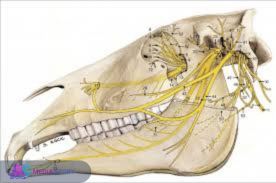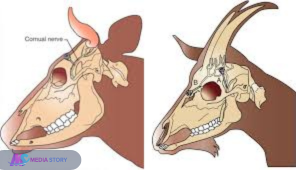The horse skull is a remarkable structure, playing a crucial role in a horse’s overall health and well-being. From protecting vital organs to supporting feeding and communication, understanding the anatomy of a horse skull offers deep insight into equine biology. In this article, we’ll explore the structure, functions, evolutionary adaptations, and interesting facts about the horse skull.
Table: Quick Facts About Horse Skull
| Feature | Description |
|---|---|
| Scientific Name | Equus ferus caballus skull |
| Number of Bones | 34 individual bones fused together |
| Weight | Around 5-10 kg (depending on breed & age) |
| Function | Protects the brain, supports teeth, aids in respiration |
| Unique Feature | Large nasal cavity for enhanced breathing |
Horse Skull Anatomy
The horse skull is complex, comprising multiple bones that provide protection, structure, and function. Let’s break it down:
1. Cranial Region (Braincase)
The cranial region houses and protects the brain. It consists of several fused bones, including the frontal, parietal, and occipital bones, which form a sturdy enclosure. This ensures that a horse’s brain remains safe from injuries.
2. Facial Region
The facial region extends from the forehead to the muzzle and includes the nasal cavity, eye sockets, and jawbone. This area determines the horse’s facial shape and length, which varies across breeds.
3. Mandible (Lower Jawbone)
The mandible is one of the strongest bones in the skull, allowing horses to chew tough plant material. It moves in a circular grinding motion, which is crucial for digestion.
4. Nasal Cavity & Sinuses
Horses have a large nasal cavity that enhances their sense of smell and helps in efficient oxygen intake. Their sinuses also play a role in lightweight skull structure while providing sound resonance.
5. Teeth and Dental Structure
Horses have hypsodont teeth, meaning they continue growing throughout life. The skull supports molars, premolars, and incisors, which are essential for grinding food.

The Importance of a Horse Skull in Equine Health
A healthy skull is vital for a horse’s feeding, breathing, and sensory perception. Understanding its role can help in diagnosing and preventing common equine health issues.
1. Dental Health
- Horses require regular dental check-ups to prevent uneven wear and sharp edges on teeth.
- Malocclusion (misaligned teeth) can cause pain and difficulty eating.
2. Breathing & Respiratory Efficiency
- The nasal passage is crucial for oxygen intake since horses cannot breathe through their mouths.
- Skull abnormalities can lead to respiratory issues like roaring (laryngeal paralysis).
3. Skull Injuries & Fractures
- Horses are prone to head trauma from kicks or falls.
- Fractures can affect vision, eating, or even brain function.
Evolutionary Adaptations of the Horse Skull
Horses have evolved over millions of years, with skull changes that supported survival in different environments.
1. Skull Elongation
Early horses had shorter skulls, but evolution led to elongated skulls for efficient grazing.
2. Eye Placement for Survival
Horses have large eyes set on the sides of their skull, allowing them to see almost 360 degrees—a crucial adaptation to spot predators.
3. Enhanced Nasal Structure
Wild horses needed strong lung capacity for endurance, so their nasal cavities expanded over time to support long-distance running.
Interesting Facts About Horse Skulls
- Teeth Reveal Age: A horse’s age can be estimated by looking at tooth wear and eruption patterns.
- Skulls Differ by Breed: Draft horses have broader skulls, while Arabian horses have dished faces due to skull shape variations.
- Horses Have No Canine Teeth (Usually): Unlike carnivores, most horses lack canine teeth—though some stallions develop small ones.
- Ancient Fossils Show Change: Early horse ancestors, like Eohippus, had skulls the size of a small dog.
- Used in Art & Symbolism: Horse skulls have been found in historical artwork, religious rituals, and folklore.

FAQs

FAQs
1. How many bones are in a horse skull?
A horse skull has 34 bones, which are fused together for protection and function.
2. How heavy is a horse skull?
A horse skull weighs between 5-10 kg, depending on the breed and age of the horse.
3. Why do horses have long skulls?
Horses have long skulls to support large teeth, strong jaw muscles, and an extended nasal cavity for better oxygen intake.
4. How does a horse’s skull help in eating?
The jaw structure allows horses to perform grinding motions, which helps in breaking down fibrous plant materials efficiently.
5. Can a horse survive a skull fracture?
Yes, minor fractures can heal with proper care, but severe fractures can impact brain function and may require surgery.
6. Why are horse skulls commonly found in archaeology?
Horse skulls were often used in ancient rituals, burial practices, and war symbolism.
7. Do all horse breeds have the same skull shape?
No, skull shape varies. Arabian horses have a concave face, while draft horses have broader skulls.
8. Are horse skulls used in medicine?
Yes, veterinarians study skulls to diagnose dental and sinus diseases in horses.
Conclusion
The horse skull is an essential part of equine anatomy, influencing feeding, breathing, and survival adaptations. Whether you’re a horse enthusiast, vet, or researcher, understanding its structure and function provides valuable insights into horse health and evolution. By ensuring proper dental care, avoiding injuries, and recognizing the importance of skull anatomy, horse owners can help maintain their animals’ well-being for years to come.







